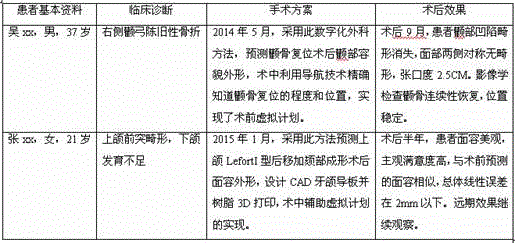Computer simulation method for predicting soft tissue appearance change after maxillofacial bone plastic surgery
A computer simulation and soft tissue technology, applied in computing, image data processing, 3D modeling, etc., can solve problems such as system errors, lack of 3D modeling methods and soft tissue deformation simulation platforms, and affect accuracy, and achieve stable results. Good long-term satisfaction and soft tissue shape symmetry
- Summary
- Abstract
- Description
- Claims
- Application Information
AI Technical Summary
Problems solved by technology
Method used
Image
Examples
Embodiment 1
[0037] A computer simulation method for predicting changes in soft tissue appearance after maxillofacial surgery, including master and slave computer systems, computer simulation software packages and computer operating systems, the master and slave computer systems include a PC computer at the foreground and a workstation in the background, and Simulation supporting simulation equipment is characterized in that: comprising the following steps:
[0038] (1) Scan the patient's maxillofacial area with spiral CT before operation to obtain high-precision DICOM data; use the FaceSCAN3D facial 3D camera to perform three-dimensional imaging on the patient's face to obtain Obj. format data; computer virtual simulation The premise is to establish a 3D model that is highly similar to the actual object. The 3D model of the maxillofacial bone and hard tissue can be accurately established from the CT data; a 3D stereoscopic camera such as FaceSCAN3D can be used to obtain a high-fidelity 3D ...
PUM
 Login to View More
Login to View More Abstract
Description
Claims
Application Information
 Login to View More
Login to View More - R&D
- Intellectual Property
- Life Sciences
- Materials
- Tech Scout
- Unparalleled Data Quality
- Higher Quality Content
- 60% Fewer Hallucinations
Browse by: Latest US Patents, China's latest patents, Technical Efficacy Thesaurus, Application Domain, Technology Topic, Popular Technical Reports.
© 2025 PatSnap. All rights reserved.Legal|Privacy policy|Modern Slavery Act Transparency Statement|Sitemap|About US| Contact US: help@patsnap.com



